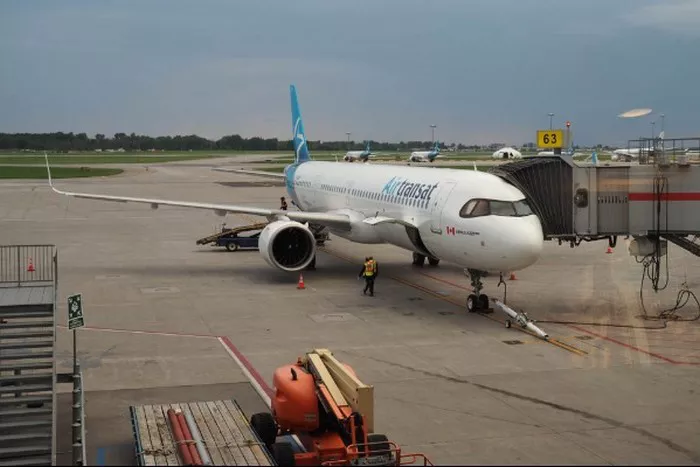Open interlining is rapidly emerging as a transformative approach in the airline industry, providing carriers with a flexible, efficient way to connect passengers across multiple airlines within a single itinerary. Unlike traditional interlining, which has long been integral to global connectivity, open interlining offers a more agile, cost-effective alternative to complex, slow-to-implement legacy systems.
“Open interlining is about expanding the possibilities and unlocking new tools to build partnerships,” said Gabor Toth, CEO of TripStack, a Canada-based travel technology firm. “Within this toolkit, virtual interlining can be used very strategically to augment traditional interlining agreements.”
In an exclusive interview with SkiftX, Toth explained the growing relevance of open interlining, particularly virtual interlining, which is quickly becoming a crucial tool for airlines seeking to improve connectivity and streamline operations.
Rethinking Airline Connectivity: Open Interlining’s Advantages
Interline partnerships contribute significantly to airline revenue, accounting for over $52 billion annually as of 2019. However, many airlines shy away from interlining due to its operational complexities and lack of flexibility. Traditional interline agreements, which were not designed for modern retail environments, hinder airlines’ ability to leverage dynamic pricing, personalized offers, and cross-carrier transactions—opportunities that can enhance both revenue and the passenger experience.
Open interlining, by contrast, allows airlines to mix and match solutions to suit their unique needs. This holistic approach embraces various connectivity models, ensuring greater flexibility and adaptability for carriers. Key pathways within open interlining include:
- Legacy Interlining: Maintaining traditional agreements where beneficial.
- Virtual Interlining: Using technology-driven solutions to dynamically connect flights.
- Offer-and-Order Integration: Adopting seamless retail-driven interactions.
- Hybrid Models: Combining elements of these approaches for maximum flexibility.
Blending Legacy and Virtual Interlining
Traditional interlining involves formal agreements between airlines, allowing passengers to book flights across multiple carriers under a single itinerary. Managed through Global Distribution Systems (GDS), these agreements handle pricing, ticketing, and payment settlements.
In contrast, virtual interlining allows travelers to book connecting flights across airlines without formal agreements. Using real-time technology, virtual interlining dynamically assembles itineraries, often at lower fares and with greater flexibility.
“We ingest billions of price points daily,” said Toth. “Our machine-learning models analyze departure times, layovers, baggage rules, and other variables to generate the most efficient itineraries in real time.”
Breaking the Barriers to Seamless Connectivity
Traditional interlining is often slow and cumbersome, involving months of negotiation, fare mapping, and reliance on legacy processes such as Billing and Settlement Plan (BSP) and proration. Airlines with direct-sales models frequently avoid interlining due to these operational constraints.
Virtual interlining has already addressed many of these inefficiencies. Unlike traditional methods, it allows airlines to create itineraries dynamically, using real-time data. This enables airlines to activate new routes in days, not months, and expand their networks with minimal overhead.
“Open interlining is about breaking down barriers,” said Toth. “It’s not just about connecting airlines but creating an ecosystem where other modes of transport could also work together to serve travelers better.”
Real-World Applications: How Airlines Leverage Open Interlining
Several airlines are already benefiting from open interlining, demonstrating its potential across various business models:
Regional Low-Cost Carriers: A European low-cost carrier can expand its reach by partnering with international airlines via virtual interlining, offering seamless travel between Europe and far-flung destinations without launching long-haul routes.
Long-Haul Airlines: Virtual interlining helps long-haul carriers fill seats by connecting with regional airlines, boosting profitability while attracting travelers from smaller airports.
Airline Alliances: Airlines in existing alliances can use virtual interlining to create dynamic, flexible partnerships that adapt to shifting market conditions, optimizing routes and network reach.
Testing New Markets: Open interlining enables airlines to test demand in new regions without the significant investment of launching direct flights, offering a low-risk way to expand their global footprint.
Unlocking New Revenue Streams with Open Interlining
Beyond operational benefits, open interlining provides airlines with innovative ways to boost revenue. By moving away from rigid, legacy systems, carriers can leverage more flexible pricing strategies, optimize inventory, and enhance ancillary sales.
“This model allows airlines to test new markets, refine their pricing strategies, and evaluate demand before committing significant resources,” Toth explained.
Airlines can use open interlining to:
Expand Market Reach: Low-cost carriers can form ad hoc partnerships with international airlines, responding quickly to market shifts without complex codeshare agreements.
Optimize Distressed Inventory: Airlines can use dynamic pricing to fill unsold seats, maximizing yield and reducing the risk of empty flights.
Enhance Ancillary Sales: With more flexible interlining, airlines can better integrate services such as baggage fees and seat upgrades, driving additional revenue per passenger.
Test New Routes: Virtual interlining allows airlines to gauge demand for new markets before committing to direct flights.
Reduce Dependence on GDS: Airlines can take more control over pricing, distribution, and settlement by moving to New Distribution Capability (NDC) and offer-and-order systems, lowering third-party costs.
The Future of Airline Connectivity: The Shift to Open Interlining
As the airline industry adapts to changing consumer expectations and operational demands, traditional interline agreements are no longer enough. Open interlining offers a forward-thinking solution, enabling airlines to stay competitive in an evolving marketplace while improving the passenger experience and maximizing profitability.
By rethinking interline strategies today, airlines can build more efficient, flexible, and profitable networks for tomorrow.

